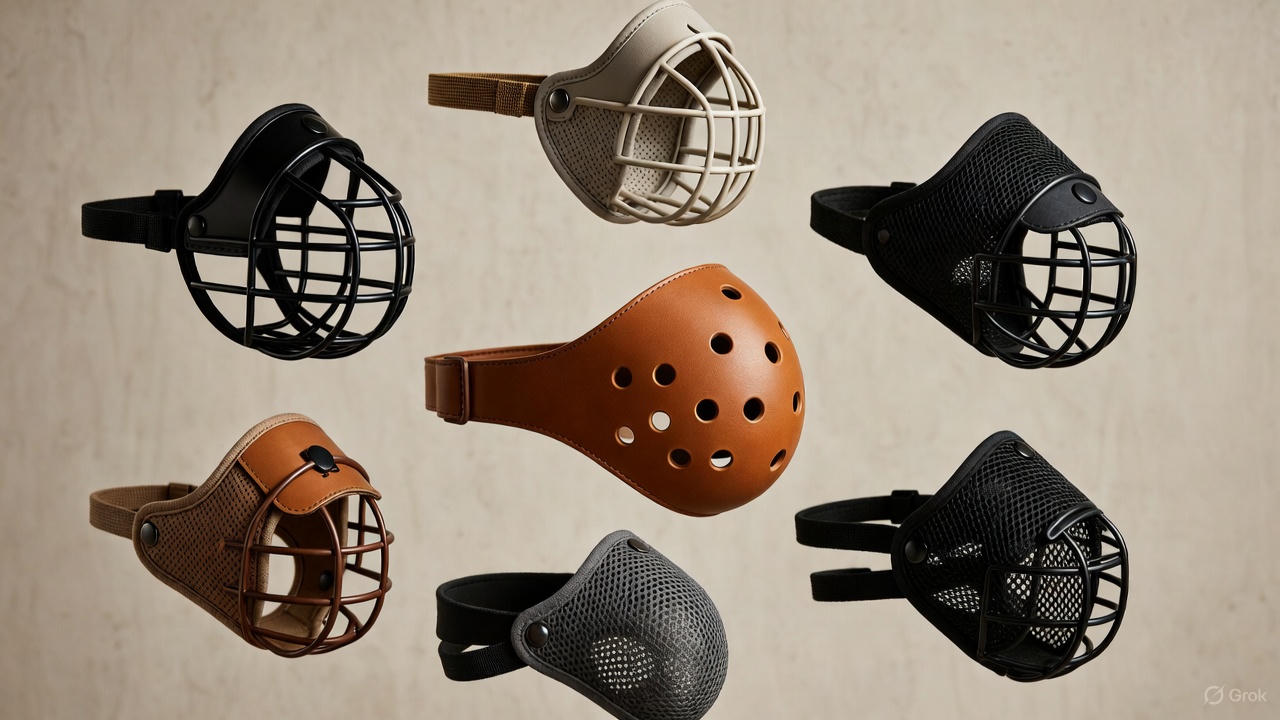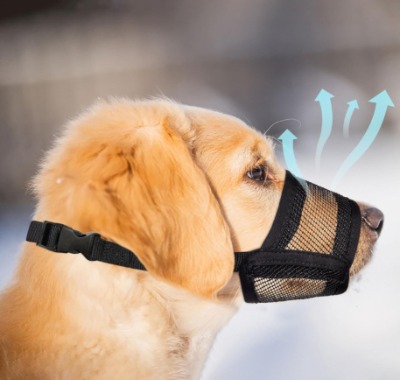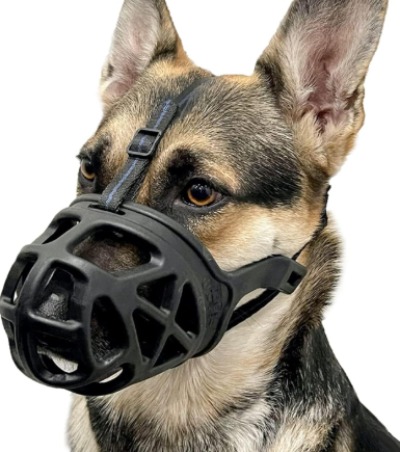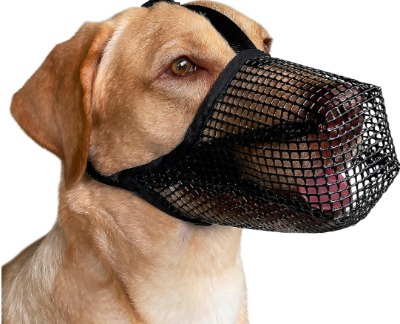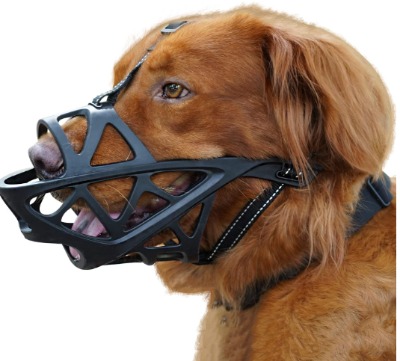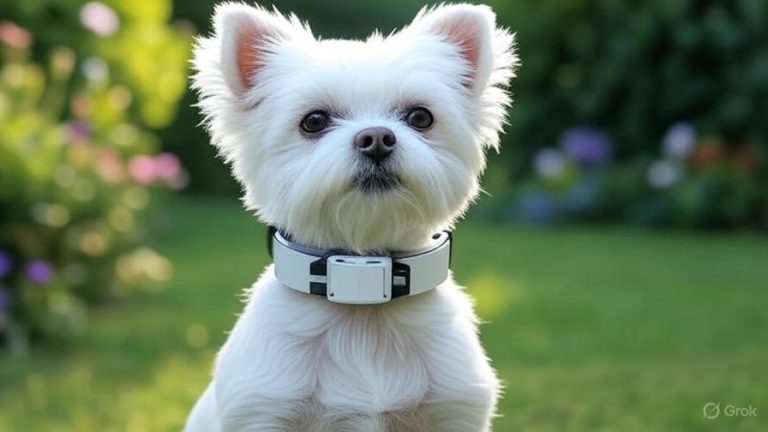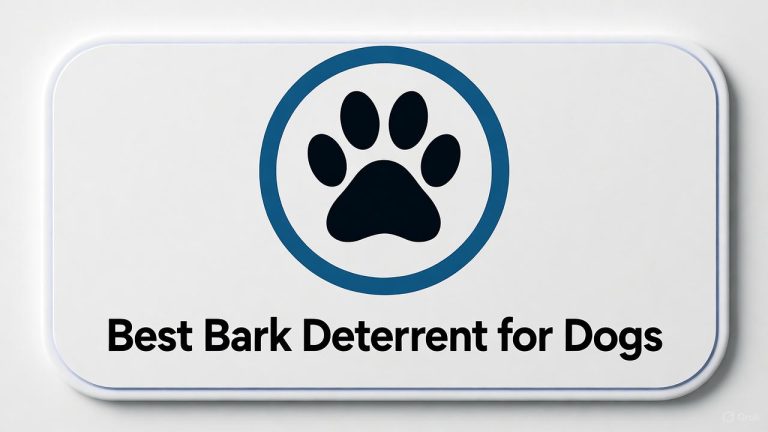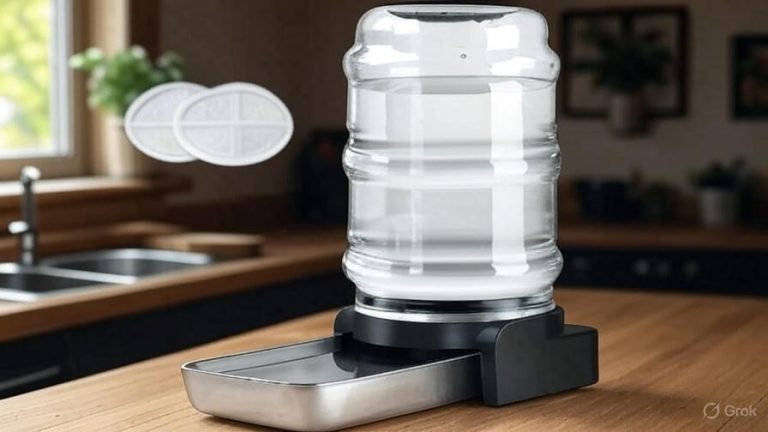5 Best Muzzles for Dogs That Eat Poop In 2025
Dogs are wonderful companions, but some develop habits that leave their owners feeling frustrated and embarrassed. One of these behaviors is coprophagia—the technical term for eating feces. This common issue affects around 12% of dogs consistently, with nearly a quarter trying it at least once. If you’ve caught your furry friend indulging in this unpleasant habit, you’re far from alone. The good news? A properly fitted muzzle can help manage this behavior while you work on training and addressing underlying causes.
This comprehensive guide explores the top muzzles designed to prevent dogs from eating poop. We’ll dive deep into each product’s features, benefits, limitations, and real-world performance to help you make an informed decision.
Understanding Why Dogs Eat Poop
Before we examine the best muzzles, it helps to understand what drives this behavior. Dogs eat feces for various reasons, ranging from natural instincts to medical concerns.
Natural scavenging instincts play a significant role. Our domesticated dogs descended from wolves and wild canines that survived by eating whatever they could find. This behavior is hardwired into their DNA. Puppies often explore the world through their mouths, and mother dogs naturally clean up after their young by consuming their waste until they’re about three weeks old.
Nutritional factors can contribute too. Dogs fed low-quality or poorly digestible food may seek additional nutrients in feces. Some medical conditions like exocrine pancreatic insufficiency, diabetes, thyroid disease, or intestinal parasites can increase appetite or cause poor nutrient absorption, leading to coprophagia.
Behavioral triggers include boredom, anxiety, attention-seeking, and learned habits. Dogs left alone for long periods with limited enrichment may turn to poop-eating as entertainment. Some dogs learn this behavior after harsh punishment during house training, trying to “hide the evidence” before their owner discovers it.
How Muzzles Help Control Coprophagia
A muzzle serves as a management tool while you address the root cause of poop-eating. It prevents your dog from picking up and consuming feces during walks or yard time, protecting them from parasites and harmful bacteria.
However, muzzles work best as part of a broader strategy. You’ll still need to supervise your dog, clean up waste promptly, provide proper nutrition, ensure adequate exercise and mental stimulation, and work on training commands like “leave it.”
The right muzzle allows your dog to breathe comfortably, pant for temperature regulation, and drink water while preventing them from picking up objects or consuming waste.
Top 5 Muzzles for Dogs That Eat Poop
1. Mayerzon Dog Muzzle – Patented Soft Mesh Design
Product Overview
The Mayerzon Patented Soft Mesh Muzzle represents one of the most popular solutions for dogs with scavenging habits. This fully-covered mesh design combines comfort with functionality, making it ideal for preventing coprophagia during outdoor activities.
Key Features
This muzzle features a soft, lightweight mesh construction that provides excellent ventilation while preventing dogs from picking up objects. The mesh sides are foldable yet resistant, making the muzzle highly packable—you can fold it and store it in your pocket easily. Both the neck strap and forehead strap come fully adjustable, and the broader straps help the muzzle stay securely in place even during active movement.
The patented design creates a fully enclosed mesh basket that stops dogs from accessing poop or other ground debris. The ultra-breathable mesh allows dogs to pant comfortably, and strategically placed holes support drinking water. The featherlight weight puts zero pressure on dogs during wear, making it suitable for extended use during grooming sessions, vet visits, or daily walks.
Size Options
Available in multiple sizes from XXS to Large, this muzzle accommodates various breeds. The Small size suits beagles and similar breeds, Medium works for larger mixed breeds, and Large fits dogs like Labradors, Golden Retrievers, and German Shepherds.
Performance Analysis
Real-world testing shows this muzzle excels at preventing scavenging behavior. The fully closed mesh design effectively stops dogs from picking up sticks, larger items, and feces. However, professional reviewers note that determined poop eaters might still manage to consume some through the mesh holes, though it significantly reduces the behavior.
The soft material makes this an excellent starter muzzle for muzzle training. The lightweight construction helps gear-shy dogs accept something on their face more easily. Many owners report success cutting a treat hole in the front to facilitate positive reinforcement training.
One consideration: the Medium size allows a half-pant, while sizing up to Large provides roomier space for full panting. If the muzzle contacts your dog’s nose, this causes discomfort and requires sizing up.
Pros
- Extremely lightweight and comfortable for extended wear
- Foldable and portable for convenient storage
- Excellent ventilation for panting and cooling
- Adjustable straps provide secure, customized fit
- Soft material prevents rubbing and chafing
- Great for muzzle training beginners
- Allows drinking water through mesh
- Prevents picking up larger objects and sticks
- More affordable than hard basket muzzles
- Reflective options available for nighttime visibility
Cons
- Not suitable for bite-risk or aggressive dogs
- Determined dogs can still consume some feces through mesh
- Mesh material can fray over time with rough use
- Light weight means no downward pressure to keep muzzle positioned
- Can bounce up into dog’s eyes if not properly adjusted
- May need replacement more frequently than rigid muzzles
- No full collar attachment for maximum security
Best For
This muzzle works best for friendly, non-aggressive dogs with scavenging or coprophagia issues. It’s ideal for public transport situations where friendly dogs must wear muzzles, grooming appointments, vet visits, and daily walks for dogs who snack on ground debris.
2. Dog Muzzle for Large Dogs – Air Mesh Design
Product Overview
This air mesh muzzle caters specifically to large-sized dogs, offering a balance between breathability and containment. The design focuses on preventing scavenging while maintaining comfort during extended wear.
Key Features
The air mesh construction provides superior airflow compared to fully enclosed designs. The muzzle covers 7.9 to 9.4 inches, fitting large breeds comfortably. Multiple adjustment points allow owners to customize the fit around the snout, forehead, and neck. The front opening design distinguishes this muzzle from completely closed options, providing enhanced breathability while still preventing most scavenging behavior.
The nose-revealing aspect allows better sniffing experiences, which many dogs appreciate. This design reduces the likelihood of the muzzle rubbing against sensitive nose areas, a common complaint with other styles.
Performance Analysis
This muzzle performs well for preventing dogs from eating larger objects and most ground debris. The air mesh effectively stops dogs from picking up sticks, stones, and similar items. However, the slightly more open design means highly determined poop eaters might occasionally succeed in consuming small amounts.
The enhanced ventilation proves beneficial during warm weather or extended wear periods. Dogs can pant freely, reducing the risk of overheating during summer walks or active play sessions.
Pros
- Enhanced breathability with front opening design
- Reduced nose rubbing and irritation
- Better sniffing capability maintains mental enrichment
- Lightweight for comfort during extended wear
- Adjustable at multiple points for secure fit
- Reflective elements improve nighttime safety
- Allows normal panting and drinking
- Suitable for warm weather use
- Less restrictive feeling for dogs new to muzzles
Cons
- More open design allows some determined dogs to grab smaller items
- Not effective for aggressive or bite-risk dogs
- May not completely prevent coprophagia in persistent dogs
- Requires accurate sizing for effectiveness
- Can shift during vigorous activity
- Adjustment straps may loosen over time
Best For
Large breed owners seeking a breathable, comfortable option for dogs with moderate scavenging tendencies. Particularly good for hot climates or dogs who exercise vigorously during muzzled time.
3. BARKLESS Dog Muzzle – Basket Cage Design
Product Overview
The BARKLESS Basket Muzzle offers a more structured approach to preventing unwanted behaviors. This cage-style design provides comprehensive coverage while maintaining excellent airflow and visibility.
Key Features
The basket construction creates a sturdy barrier that prevents biting, chewing, and scavenging effectively. The humane cage mouth cover features bar spacing that forms the muzzle shape while allowing unrestricted drinking and panting. The design includes an adjustable head and neck strap system for achieving optimal fit across different breeds.
Available in sizes from XS to Large, this muzzle accommodates small aggressive dogs through large reactive breeds. The black color option provides a classic, understated appearance.
Construction Analysis
Many BARKLESS muzzles feature soft silicone construction in their basket design. This material offers more pliability than hard plastic alternatives, making it more comfortable for dogs to wear. However, the softer material also means it’s not suitable for determined biters who can bend or fold the silicone to grab things.
The muzzle includes a loop at the bottom for attaching to a collar, providing additional security. An overhead strap attaches to the neck strap, though some reviewers note this strap tends to slide to one side on dogs with longer snouts.
Performance Analysis
For preventing scavenging and poop-eating, the more closed basket design provides better protection than open mesh alternatives. The bar spacing makes it significantly harder for dogs to pick up objects from the ground. However, professional reviewers note that extremely determined poop eaters might still manage to consume some through the openings.
The basket style allows plenty of airflow, reducing concerns about overheating during use. Dogs can pant fully, drink water easily, and even take small treats through the openings during training sessions.
Pros
- Sturdy basket construction prevents most scavenging
- Better protection than soft mesh alternatives
- Allows full panting and comfortable breathing
- Dogs can drink water easily
- Collar loop provides extra security
- More coverage reduces successful coprophagia attempts
- Suitable for grooming, training, and vet visits
- Available in multiple sizes for different breeds
- Allows treat training through openings
Cons
- Soft silicone can be bent by determined dogs
- Not recommended for high bite-risk dogs
- Overhead strap may slide on dogs with longer snouts
- Heavier than mesh alternatives
- Neck straps may loosen during use
- Initial adjustment can be tricky
- Some dogs resist the more substantial design initially
- Requires proper acclimation training
Best For
Dogs with moderate to serious scavenging issues who need more coverage than mesh provides. Good for training sessions, grooming appointments, and situations where you need reliable prevention of unwanted mouth behaviors.
4. Mayerzon Dog Muzzle – Patented Mesh with Adjustable Straps
Product Overview
This variation of Mayerzon’s mesh muzzle line emphasizes adjustability and secure fit. The covered mouth guard design with multiple adjustment points provides enhanced customization for achieving the perfect fit across various face shapes.
Key Features
The soft mesh covers the entire muzzle area, preventing biting, chewing, and licking behaviors effectively. Multiple adjustment straps allow for fine-tuning the fit around the snout, over the head, and around the neck. This version includes enhanced strap security to minimize shifting during use.
The mesh material remains breathable and lightweight, maintaining the comfort features that make Mayerzon muzzles popular. The odorless construction ensures dogs don’t object to unpleasant smells when wearing the muzzle.
Performance Comparison
This model performs similarly to the first Mayerzon option but offers enhanced adjustability. The additional strap adjustments help achieve a more secure fit, reducing the likelihood of the muzzle bouncing up into the dog’s eyes or shifting during activity.
The covered design stops dogs from licking wounds or incisions, making this a good choice for post-surgical recovery when you need to prevent interference with healing areas.
Pros
- Enhanced adjustability for custom fit
- Prevents licking, biting, and chewing
- Soft, comfortable mesh construction
- Lightweight and breathable
- Reduces scavenging and coprophagia
- Suitable for multiple use cases
- Easy to clean and maintain
- Portable and storable
- Good value for money
Cons
- Similar limitations to other mesh designs
- Not for aggressive or bite-risk dogs
- Mesh can fray with extensive use
- Determined dogs may still access some feces
- Requires proper sizing to be effective
- Multiple straps need careful adjustment
Best For
Dogs who need prevention of multiple mouth behaviors including licking, chewing, and coprophagia. Particularly useful during recovery periods after surgery or veterinary procedures.
5. BARKLESS Dog Muzzle – Soft Basket for Medium/Large Dogs
Product Overview
Designed specifically for medium to large breeds like Labradors, Golden Retrievers, German Shepherds, and Australian Shepherds, this soft basket muzzle balances coverage with comfort. The design targets common behavioral issues including biting, chewing, and scavenging.
Key Features
The soft silicone basket construction provides more substantial coverage than mesh alternatives while remaining more comfortable than hard plastic. The design allows dogs to drink and eat small treats, facilitating positive training methods. The muzzle comes in Medium size, accommodating popular family dog breeds.
The basket spacing prevents access to ground debris while maintaining excellent ventilation. Reflective elements on some models enhance visibility during evening walks, improving safety.
Material Analysis
The soft silicone material offers several advantages over rigid alternatives. It’s less likely to cause chafing or rubbing discomfort during extended wear. The flexibility makes it easier for dogs to pant naturally without restriction. However, this softness also means the muzzle won’t withstand determined biting attempts.
The padded straps increase comfort around the head and neck. Cotton covers contact surfaces, reducing the risk of irritation on sensitive skin.
Performance Analysis
This muzzle performs well for preventing coprophagia in most situations. The basket design makes it significantly harder for dogs to reach ground-level items compared to less substantial alternatives. The more closed structure stops most attempts at poop-eating, though extremely persistent dogs might occasionally succeed.
The ability to accept treats through the basket openings proves valuable during training sessions. You can reward your dog for good behavior even while wearing the muzzle, supporting positive reinforcement techniques.
Pros
- Soft silicone comfortable for extended wear
- Suitable for popular medium and large breeds
- Prevents most scavenging and coprophagia attempts
- Allows drinking and small treat consumption
- Padded straps increase comfort
- Cotton-covered contact points reduce rubbing
- Good ventilation and airflow
- Reflective elements enhance safety
- Less intimidating appearance than hard muzzles
- Easy to clean and maintain
Cons
- Not suitable for aggressive dogs or serious biters
- Soft material can be damaged by determined chewing
- Shape may flatten during shipping and require reshaping
- Overhead strap may slide on some face shapes
- Requires positive training for acceptance
- Not effective for all dogs with coprophagia
- May need sizing adjustments to fit properly
Best For
Medium to large breed dogs with scavenging or poop-eating habits who need a comfortable, humane solution. Ideal for dogs who aren’t aggressive but require prevention of unwanted eating behaviors during walks, park visits, or outdoor activities.
Sizing Guide for Success
Proper sizing makes the difference between an effective muzzle and a frustrating experience. Follow these steps to measure your dog correctly:
Snout Length: Measure from the tip of your dog’s nose to about half an inch below their eyes where the muzzle would sit. This ensures the muzzle doesn’t poke into their eyes.
Snout Circumference: Wrap a measuring tape around the widest part of your dog’s snout, typically about half an inch below the eyes. Add two fingers’ width to this measurement to ensure your dog can pant comfortably.
Neck Circumference: Measure around your dog’s neck where the muzzle strap would sit, behind the ears.
Most manufacturers provide detailed sizing charts showing measurement ranges for each size. Compare your dog’s actual measurements to these charts rather than relying on breed recommendations alone. Dogs within the same breed can vary significantly in size.
When measurements fall between sizes, generally size up. A slightly larger muzzle that allows full panting proves safer and more comfortable than a too-small option that restricts breathing.
Training Your Dog to Accept a Muzzle
Simply strapping a muzzle on your dog leads to stress and resistance. Proper training creates positive associations and ensures your dog tolerates or even welcomes muzzle time.
Step 1: Introduction (Days 1-3)
Let your dog sniff the muzzle without doing anything else. Place it near their food bowl or favorite resting spot so they encounter it naturally. Reward any positive interest with treats and praise.
Step 2: Association (Days 4-7)
Hold the muzzle and offer treats through or near it. Let your dog reach toward the muzzle to get rewards. This creates a positive connection between the muzzle and good things.
Step 3: Brief Wearing (Days 8-14)
Place the muzzle on your dog’s snout without fastening it. Immediately offer a high-value treat, then remove the muzzle. Repeat several times, gradually increasing the duration before treating.
Step 4: Fastening (Days 15-21)
Put the muzzle on and buckle it closed. Immediately offer treats, praise, and attention. Keep these sessions very short initially—just a few seconds. Remove the muzzle while the experience remains positive.
Step 5: Duration Building (Days 22+)
Gradually extend the time your dog wears the fastened muzzle. Start with one minute, then five, then ten. Always reward calm behavior while wearing it. Begin moving around the house, then progress to short walks outside.
Step 6: Real-World Practice
Once your dog accepts the muzzle for 15-20 minutes indoors, begin using it during actual walks or situations where you need to prevent coprophagia. Continue rewarding good behavior and maintain positive associations.
Maintenance and Care
Proper muzzle care extends its lifespan and keeps it hygienic for your dog.
Cleaning Mesh Muzzles: Rinse with warm water after each use to remove dirt and debris. Wash weekly with mild pet-safe soap. Air dry completely before storage to prevent mold or mildew.
Cleaning Basket Muzzles: Wipe down after use with a damp cloth. Wash regularly with soap and water, getting into all the crevices. Silicone muzzles are dishwasher safe on the top rack.
Inspection: Regularly check for signs of wear including frayed mesh, cracked silicone, or weakened straps. Replace muzzles showing significant damage to ensure continued effectiveness and safety.
Storage: Store in a cool, dry place away from direct sunlight. Mesh muzzles fold compactly. Basket muzzles may need more space but shouldn’t be crushed under heavy items.
Beyond the Muzzle: Addressing Root Causes
Remember that muzzles manage the symptom, not the cause. For long-term success, address why your dog eats poop.
Veterinary Examination: Rule out medical issues like parasites, nutritional deficiencies, or digestive problems. Some dogs eat feces due to conditions that increase appetite or prevent proper nutrient absorption.
Dietary Improvements: Feed high-quality dog food with whole meat as the first ingredient. Better digestibility means fewer undigested nutrients in feces, reducing their appeal. Feed smaller, more frequent meals to prevent hunger-driven behaviors.
Environmental Management: Clean up feces immediately after your dog eliminates. This removes the opportunity and prevents habit reinforcement. If you have cats, make litter boxes inaccessible to your dog using pet gates or elevated placement.
Training Commands: Teach reliable “leave it” and “drop it” commands. Practice with various objects until your dog responds consistently. Reward heavily when they turn away from feces during walks.
Mental and Physical Enrichment: Provide adequate exercise, training, play, and puzzle toys. A tired, mentally satisfied dog has less interest in undesirable behaviors. Many dogs eat poop out of boredom or lack of stimulation.
Stress Reduction: Identify and minimize stressors in your dog’s environment. Anxiety can trigger coprophagia in some dogs. Create a calm, predictable routine with plenty of positive attention.
Special Considerations
Puppies: Young dogs often outgrow coprophagia naturally as they mature. Focus on supervision, immediate cleanup, and teaching appropriate behaviors rather than relying solely on muzzles.
Multiple Dogs: If one dog eats another’s feces, the dog producing the feces may have digestive issues. Have both dogs examined by a veterinarian.
Cat Feces: Many dogs find cat poop particularly appealing due to its high protein content. Preventing access proves more effective than muzzling in this case. Elevate litter boxes or use covered boxes with small entry holes.
Outdoor Encounters: During walks where your dog might encounter other animals’ feces, combine muzzle use with vigilant supervision and “leave it” training. Keep your dog focused on you with high-value treats and engaging activities.
Safety First
Never leave your dog unsupervised while wearing a muzzle. Dogs need the ability to vomit if necessary, and some muzzles can restrict this protective reflex. Remove the muzzle during feeding times, unless specifically designed for eating.
Limit muzzle wear to necessary periods. While a properly fitted muzzle allows panting and drinking, extended wear can cause stress. Use muzzles during walks and high-risk times, then remove them when your dog is safely indoors.
Monitor your dog’s behavior while wearing the muzzle. Signs of distress include excessive pawing at the muzzle, rubbing their face, whining, or refusing to move. If you see these behaviors, remove the muzzle and return to earlier training steps.
Check the fit regularly, especially during growth periods for young dogs. A muzzle that fit perfectly three months ago may become too tight as your dog develops.
Making Your Decision
Your choice depends on your specific situation, dog’s personality, and the severity of the coprophagia issue.
For mild cases where your dog occasionally snacks on feces but isn’t obsessive, start with the Mayerzon Soft Mesh Muzzle. Its comfort and breathability make it ideal for longer wear during training periods.
For more persistent scavengers who actively seek out feces, consider the BARKLESS Basket designs. The more substantial coverage provides better prevention while still allowing comfort and breathing.
For large, active dogs who need maximum breathability, the Air Mesh Muzzle for Large Dogs offers excellent ventilation while managing most scavenging behaviors.
Budget-conscious owners will find the Mayerzon options provide excellent value without sacrificing quality or effectiveness. These muzzles cost significantly less than premium alternatives while performing well for their intended purpose.
Conclusion
Dealing with a dog who eats poop challenges even the most patient owners. The behavior is unpleasant, potentially unhealthy, and socially embarrassing. However, with the right muzzle and comprehensive approach, you can manage this issue effectively.
The muzzles reviewed in this guide offer proven solutions for preventing coprophagia during walks and outdoor time. Each product brings unique advantages, from the lightweight comfort of Mayerzon’s mesh designs to the more substantial protection of BARKLESS basket styles.
Success requires more than just the right equipment. Combine muzzle use with proper training, environmental management, dietary improvements, and addressing any underlying medical or behavioral issues. This multi-faceted approach produces the best long-term results.
Remember that every dog is different. What works perfectly for one may not suit another. Take time to measure carefully, train patiently, and adjust your approach based on your individual dog’s needs and responses.
With consistency, positive reinforcement, and the appropriate muzzle from this guide, you can help your dog overcome their poop-eating habit and enjoy cleaner, more pleasant interactions together. Your dog’s health and your peace of mind are worth the effort.

